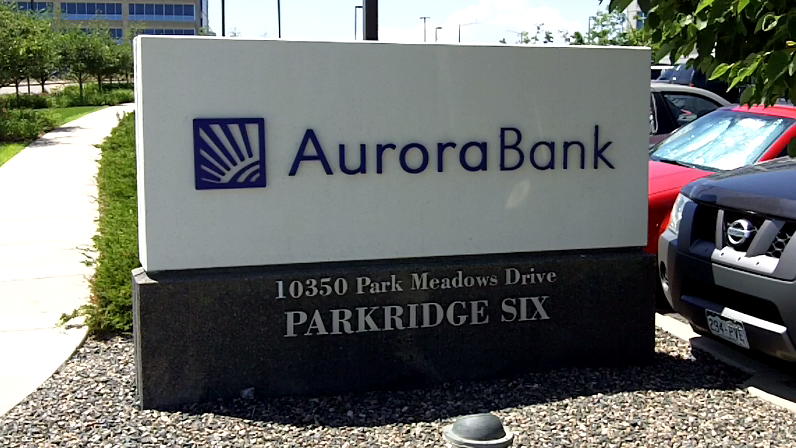Nancy O’Malley has been the Alameda County District Attorney for just over four years and has a track record of being soft on white-collar crime. Local, in-county white collar criminals are even less likely to be prosecuted that those from out of town. The record speaks for itself, and to add to her legacy is the accepting of a campaign contribution from a local nonprofit her office was asked to investigate. It is illegal for nonprofits to contribute to politicians’ campaigns. More than two years later she has not returned the contribution. A local developer with ties to mortgage fraud and an FBI investigation has also made significant contributions to her re-election campaign and so far there are no signs of O’Malley investigating the case.
Nancy O’Malley has made the Alameda County District Attorney’s office her career, having started as a Deputy District Attorney in 1984. In 2009 O’Malley was appointed to fill the seat of her predecessor Tom Orloff, who resigned less than a year before the June 2010 election. O’Malley was Orloff’s chosen replacement and the Board of Supervisors appointed her to the position. She then ran unopposed for re-election.
As with all the other prosecutors we have discussed in previous posts, O’Malley has claimed that she will prosecute all crimes, not just select ones. Prior to being appointed by the Board of Supervisors she said, “I feel very strongly about living my life as an ethical woman who is honest and straightforward. What you see is what you get with me.”
In the video below, O’Malley declares that “In Alameda County victims of crime will be treated with dignity, with respect, and with fairness because your voice matters.”
Shortly after her appointment O’Malley began the proclamations of how tough she would be on mortgage fraud. She produced press releases espousing how important it is for her office to pursue these cases. In 2011 when the video below was recorded, she held a press conference and said, “we will aggressively prosecute those individuals who commit loan fraud, who commit real estate fraud.”
The problem: just like Eric Holder nationally, and Kamala Harris in California, there is almost nothing in the record to support O’Malley’s claims of aggressively pursuing mortgage fraud prosecutions. I can find only one case where O’Malley was remotely involved in prosecuting a case for defrauding a borrower during mortgage origination. In that case, the original action was brought by a State agency, and O’Malley’s office merely piled on. The case was settled without anyone going to jail.
O’Malley’s July 2010 newsletter talks about Deputy DA David Lim’s article titled Local Prosecution of Real-Estate Fraud as a Means to Achieving Social and Economic Justice for Low-Income Victims and Communities: A Case Study.” Lim’s article points out that federal prosecutors have an unwritten policy of not prosecuting cases where the damages are less than $1 million and that local prosecutors were in a position to act quickly. In the article Lim said:
“While the Federal Bureau of Investigation (FBI) does not formally acknowledge that it has a “minimum-loss” threshold, the threshold is well known in the law enforcement community. The FBI Miami field office is the only office known to have acknowledged that such a threshold exists (see Glenn Theobald, Attacking Mortgage Fraud in Florida, Community Policing Dispatch (Office of Community Oriented Policing Services, U.S. Department of Justice), June 2009, http://bit.ly/cops_usdoj_enews).”
Our case includes a clear forgery of the loan application that we had no knowledge of until Bank of America provided us a copy in 2011. We did not even know the forged loan application existed prior to June 2011. I have written three letters to Nancy O’Malley’s office in the last year trying to get action on our case. Each inquiry to O’Malley’s office has received a different response. The first came from Inspector Pat Johnson who stated the office would take action if we could identify the forger. No explanation as to why investigators in O’Malley’s office could not do the investigating. He acknowledge that a crime had occurred but the office would do nothing unless we did the investigation. We know the probable date and location of the forgery, and it would not take much of an investigation to determine who was guilty, but Inspector Johnson suggested it’s self service justice or nothing. The second letter was brushed off, and the third received the incredible response, documented in our last post, where Deputy DA David Lim revealed that in 2008 prosecutors agreed to not prosecute mortgage origination fraud, and for that reason the Alameda County DA’s office would not pursue a prosecution in our case. No matter how egregious a case of mortgage origination fraud might be, O’Malley’s office will not prosecute because of the agreement made in 2008. And since the case is worth less than $1 million the feds will not prosecute and Kamala Harris no record of prosecuting such cases.
The mortgage fraud cases O’Malley has prosecuted seem to share common themes: they involve businesses and individuals from outside the county, they are relatively small time players in the industry who are a bit sketchy to begin with, and they are often minorities. I cannot find a single case of O’Malley’s office prosecuting a local mortgage broker for defrauding borrowers during mortgage origination. The only case we can find involving prosecution of a local suspect was the bringing of a case against William Hogarty who was charged with attempted murder before being prosecuted for mortgage modification scams. Again is was not a case of mortgage origination or predatory lending, but it was the prosecution of a resident of Alameda County, a true rarity.
O’Malley has her own biases as to which crimes are most important to prosecute. Her biases are shown in her July 22, 2013 presentation to the Alameda Planning Board. She is very afraid of the crime that might overflow into her hometown of Alameda. Steven Tavares’ report in the East Bay Citizen includes the video proof of O’Malley’s concerns that certain elements from Oakland might come into her city. In the video she clearly states her fears and concerns about crime in Oakland. Unfortunately, as Matt Artz of the Oakland Tribune reported, O’Malley “dramatically overstated the robbery crisis gripping Oakland.”
One of the biggest donors to O’Malley’s re-election campaign is Discovery Builders, a company owned by the Seeno family. This is that same company that has been implicated in mortgage fraud and has apparently been investigated by the FBI.
Discovery Builders has made two contributions to O’Malley’s 2014 re-election campaign: $2,500 on August 23, 2012 and $1,000 on August 25, 2011. There is no word of O’Malley’s office investigating Seeno or Discovery even though there are allegations of wrongdoing in Alameda County.
The January 31, 2012 filing by O’Malley’s 2014 re-election committee shows that on August 22, 2011 she received a $1,000 contribution from the 501(c)(3) nonprofit Tri-Valley Community Foundation (TVCF). IRS regulations prohibit nonprofits from donating to political candidates. More troubling is that, as was reported, the TVCF Board asked the Alameda County DA’s office to investigate when the President of TVCF had been found to have made questionable expenditures of Foundation monies. TVCF also donated to one of O’Malley’s pet projects, the Alameda County District Attorney’s Justice Academy, before the alleged wrongdoing by the former President was discovered.
In October 2013, the Oakland Tribune reported: “In a phone interview, Teresa Drenick, spokeswoman for O’Malley, pointed to a host of initiatives coming from the DA’s office, including the “at school” program focusing on keeping children in school and out of the criminal justice system, getting unprocessed rape kits tested, and fighting against real estate and mortgage fraud.” O’Malley’s campaign website never mentions mortgage fraud or addresses white collar crime in any significant way.
From Nancy O’Malley’s campaign website: “I have been committed to continually fight crime on behalf of citizens and victims for over 25 years. As the District Attorney, it is my role as chief law enforcement officer in the county to be ethical, honest, and above reproach in my decision making. I have a history of being fair and impartial and am committed to serving the people of this county for many years to come.” Too bad she fails to mention she does not prosecute white collar criminals who live in Alameda County that might make contributions to her campaign or vote for her.
Nancy: when will you prosecute the people that look like you and were the real cause of the mortgage and financial disasters? The people who hold licenses to operate and should be put out of business for their wrongdoing. The same people you hope will give you campaign contributions and vote to keep you in office. It is time for Nancy O’Malley to be ethical, honest and straightforward with the people of Alameda County.



